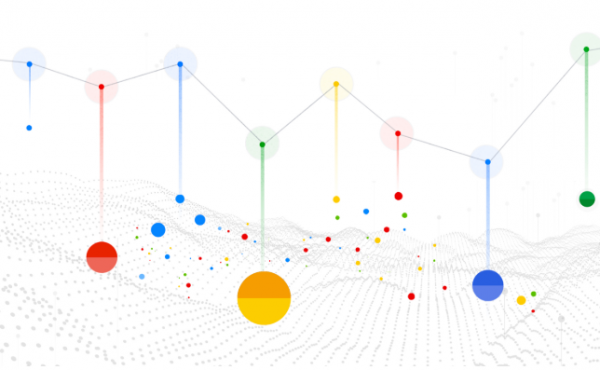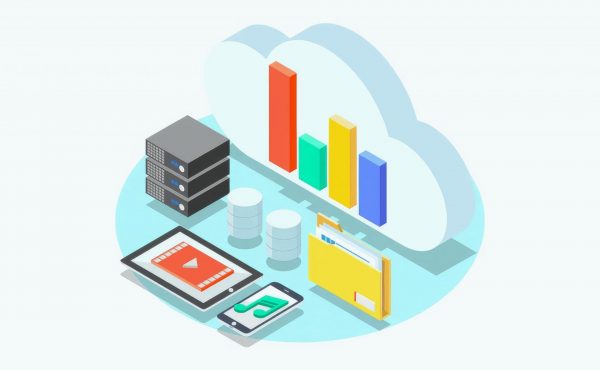BigQuery. The path to modern data analytics
AI in Telecom: A ‘Buzz’word or a Real Game-Changer?
- State of AI in Telecom
- How It’s Done in Practice

- AI in Telecom Trends 2024
- About Us
Whenever most folks try to describe the telecommunications sector, the word is ‘stagnant.’ Apparently, it’s been that way for decades, which makes the great picture look, well, not great at all. We, however, beg to differ. With the advent of generative artificial intelligence, telecom operators all over the world—MNOs, MVNOs, and others alike—have flocked to the new tech despite not being much of an early-adopting lot. Why has AI in telecom provoked the shift, and why now?
State of AI in Telecom
McKinsey, one of the Big Three strategic management consulting firms, estimates that the aggregate economic impact that AI wields on telecom is equal to a staggering US$450–680 billion. Using its extensive industry experience as evidence, the company argues that Generative AI has all the potential to send telcos’ EBITDA soaring:
- Three to four percentage points growth in returns on incremental margins within a two-year window.
- Eight to ten percentage points rise in returns on incremental margins within a five-year window.
The key driver here is customer revenue, which, according to McKinsey, stands to gain a lot from enhanced customer lifecycle management and reduced cross-domain expenditures—all the courtesy of GenAI, of course.
In its 2024 Telco Value Creators Report, Boston Consulting Group (BCG), another Big Three company, states that at some point in the future, GenAI will be advanced enough to cut the number of interactions with customer service reps in half while keeping satisfaction levels high and costs associated with processing such requests low.
Both consultancies stress the fact that AI will assist telcos with re-imagining their entire value chains. The sentiment is supported by a Big Four member, PricewaterhouseCoopers (PwC), which found that as of early 2024, 69% of the industry’s chief executive officers considered GenAI a disruptive force to be applied to the way their firms realize, produce, and disseminate value over the next 36 months. Ernst & Young (EY) survey respondents, also executives, believe that AI in telecom as a whole is definitely here to stay as its importance will only increase over a half-decade to come.
How It’s Done in Practice
Instead of just speculating about how the tech might or might not impact the sector, let us take a look at some real-world AI use cases in telecom.
Bell Canada
Dating back to 1880, Bell is the largest telecommunications provider in Canada. Right now, the company is carrying out a heavy digital transformation in a bid to become an AI-driven organization. Leveraging Google Cloud (Vertex AI & Gemini), Accenture, and Pega systems, Bell looks to artificial intelligence for improved customer experiences, optimized network operations, and more efficient business overall.
Data-Driven Insights and Action
Bell’s AI strategy is built atop a five-step pipeline; the main goal is to extract valuable insights from complex customer and network data. Thanks to a combination of two types of events—namely, those related to the customer journey and those related to the network itself—Bell is able to:
- Locate Complex Events: Bell detects and analyzes critical occurrences within the customer journey and network infrastructure.
- Bring Customer and Network Data Together: The company merges disparate data sources to obtain a single-pane-of-glass view of customer interactions and network performance.
- Derive Insights: Bell then turns to advanced analytics to decipher the patterns, trends, and correlations in the combined data.
- Score and Prioritize: Bell also assigns scores to the events and insights based on how impactful and urgent they potentially are.
- Take Action: Last but not least, the telco implements targeted actions to address issues and perfect customer experiences. This process comes bundled with removing bottlenecks in network operations.
Key Objectives and Achievements
Bell Canada has set ambitious goals for its AI-driven telecom transformation, which are:
- Increasing EBITDA by 19% within Three Years: Bell seeks to achieve significant financial gains (which, by the way, exceed McKinsey’s expectations) via improved operational efficiency and enhanced customer satisfaction.
- Automate Network Operations: With AI, the company aims to automate routine tasks, reduce manual errors, and make the network more reliable.
- Diagnose and Heal Network Issues: Another area of Bell’s interest is watching out for and resolving network problems before they escalate and impact customers.
- Make Agents More Productive: Bell Canada is set to empower customer service agents with AI-powered tools to provide fast and accurate support.
- Craft Personalized Customer Experiences: The operator wants to ensure that all interactions and offerings are in line with the unique needs and preferences of its individual customers.
The Role of AI in Telecommunications
Generative AI is central to Bell’s AI strategy, serving as a “wrapper” that enables the company to:
- Create the Right Sentiment: Personalization should reflect the company’s brand and adequately cover customer expectations.
- Build Trust and Loyalty: Empathetic and highly engaging interactions should encourage strong customer relationships.
- Improve CX across Every Touchpoint: Smooth and personalized support should make the customer journey way easier.
Conclusion
Last year, everybody focused on revenue and hyper-personalization. The Bell Canada of 2024 builds upon that AI in telecom insight with network automation, eyeing a more complete view. The major aspect here is the clean data; on top of it comes predictive and adaptive AI, and GenAI tops it all off.
MASMOVIL
After joining hands with Orange in March 2024, MASMOVIL has emerged as the largest telco in Spain. But even prior to the merger, its extensive network provided coverage to a significant portion of Spanish residents. The fixed network reached 18 million homes through ADSL technology and an impressive 28 million homes with fiber optic connections. On top of that, MASMOVIL’s 4G mobile network ensures nationwide connectivity as it is accessible to 98.5% of the Spanish population.
Early in the partnership with Google Cloud, the company employed advanced analytics and machine learning to categorize customers, risks, conversion likelihood, causality, segmentation, and triggers. Without this data-driven approach, it would’ve been complex to grasp consumer behavior and tailor marketing strategies.
Since MASMOVIL expanded its data availability within Google Cloud, it became ready for AI-driven innovation. The company focused on network optimization and anomaly detection and has been using AI to swiftly locate and respond to network issues. Moreover, MASMOVIL started using generative AI in telecom in an attempt to make interactions with its customers more interesting and relevant.
With Google Cloud and Vertex AI, MASMOVIL got way more flexibility. The carrier can now teach machine learning models in numerous ways, from pre-training them to building custom solutions. Vertex AI has also made it easy to experiment and iterate during the development process, allowing MASMOVIL to make improvements to its models step-by-step. Furthermore, the MLOps methodology made it possible to automate prediction generation and recalibration and continuously improve AI models in production.
The outcomes brought by Google Cloud, in general, and its AI in telecom functionality, in particular, have been more than promising:
- Over 200 processes reaching production every week.
- Over 50,000 events generated and consumed every second.
- 90% plummet in latency.
- Business performance powered by AA and ML services.
- Strengthened commitment to ESG practices.

O2 Telefónica Germany
Telefónica serves a whopping 44 million customers in the German market. So, it’s only logical that once consumer traffic reached a certain threshold, the telco firm decided it was about time to operate a greener network. Nokia, a recognized industry leader, sought to come up with a solution that would enable Telefónica to achieve these goals.
The duo picked Google Cloud for the advanced AI capabilities it offered and arrived at a new, cloud-native AI engine that could efficiently manage network resources, performance, and reliability. With power-saving features and layers incorporated, Telefónica managed to control the entire mechanism, while the AI engine itself helped reduce energy consumption.
What Google Cloud did was provide the necessary infrastructure and toolkit to support the deployment. The transparent collaboration between the three brought positive change to both the dev process and the TTM. Moreover, Telefónica’s goals happened to be in perfect sync with Google Cloud’s own ESG commitments, as the latter operates one of the cleanest cloud infrastructures in the industry.
By combining their expertise and leveraging Google Cloud solutions, Telefónica and Nokia were able to roll out a sustainable network solution that not only met their business objectives (i.e., 5–10% in cumulative energy savings) but also contributed to a more environmentally responsible future. Just in two months’ time!
Orange Poland
Orange, a telecommunications provider chosen by as many as 17 million B2C and B2B customers in Poland, faced significant challenges revolving around its vast data repository, compliance and security, and advanced insight extracted with the help of artificial intelligence. To address these issues head-on, the company partnered with Google Cloud, Accenture, and Teradata to migrate its data analytics processes and assets to the cloud.
The transition to Google Cloud made Orange Poland more flexible, scalable, and cost-effective compared to when it used on-premises solutions. The company also adopted BigQuery, Vertex AI, and Google Cloud-hosted Teradata VantageCloud; the goal was to arrive at a unified approach to data management and AI-driven insights.
The successful migration and implementation of the new solution yielded several significant benefits for Orange Poland:
- The company now enjoys more reliable and secure data and can better comply with industry regulations (those covering AI in telecom included).
- The cloud-based infrastructure has made IT infrastructure more flexible, enabling rapid scaling and adaptability.
- Furthermore, Orange Poland gained the ability to support customer-facing projects, such as customer churn prediction, marketing optimization, and next-best-offer recommendations.
With AI-powered analytics, Orange Poland has become better equipped to make data-driven decisions than ever. The nature of these decisions spans pricing, marketing, investments, customer relationship management, and more. For example, the company now captures behaviors that signal either satisfaction or dissatisfaction with its services and acts faster to retain customers.
AI in Telecom Trends 2024
The practical examples provided above lead us to the following conclusions regarding the latest trends in adopting AI in telecom:
- First and foremost, artificial intelligence is currently embraced to augment the work of customer service agents; however, the situation is possibly set to change in the future once models have progressed sufficiently to replace the workforce.
- GenAI is used to achieve a degree of personalization that was simply impossible in the past. Moreover, this personalization is omni-channel, meaning it can reach the customer on whatever platform they use and be adapted to meet the unique requirements of that platform (think, for example, of tone).
- Artificial intelligence powers analytics platforms and individual dashboards, giving telcos unprecedented visibility into their customers’ behaviors, spending habits, preferences, and complaints.
- As the world rightly moves toward eco-friendliness, AI has a significant potential to support telcos’ efforts in reducing carbon footprint and meeting other, more nuanced Environmental, Social, and Governance objectives.
- In June this year, some of the largest telco market players who founded Global Telco AI Alliance—namely, Deutsche Telekom, SK Telecom, e&, Singtel, and SoftBank Corp.—pledged to jointly design and release a multi-lingual Large Language Model (LLM) catering to specific needs related to the use of AI in telecom.
About Us
Cloudfresh is a global Google Cloud Premier partner whose engineers hold some of the latest certifications in the AI domain. Whether you’re interested in Vertex AI, Gemini (both mentioned in this article), Dialogflow, or Gemini Code Assist, we can help you make the most of Google AI services.
As part of our partnership, we’ll design a concept, a prototype, a Proof-of-Concept, and a Proof-of-Value to help you navigate the change before the project kicks off. To learn more about all the opportunities you stand to benefit from while collaborating with Cloudfresh, please fill out the short form below.















